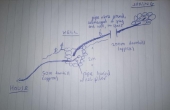
 3
3








Without really knowing how these things work my initial worry is that having it leak out 24/7/365 could lead to water scarcity in the future
Invasive plants are Earth's way of insisting we notice her medicines. Stephen Herrod Buhner
Everyone learns what works by learning what doesn't work. Stephen Herrod Buhner
 2
2




SKIP books, get 'em while they're hot!!! Skills to Inherit Property
See me in a movie building a massive wood staircase:Low Tech Lab Movie
 3
3




 1
1




 1
1




 1
1




 3
3




Visit Redhawk's soil series: https://permies.com/wiki/redhawk-soil
How permies.com works: https://permies.com/wiki/34193/permies-works-links-threads
 3
3




John Daley Bendigo, Australia The Enemy of progress is the hope of a perfect plan
Benefits of rainfall collection https://permies.com/t/88043/benefits-rainfall-collection
GOOD DEBT/ BAD DEBT https://permies.com/t/179218/mortgages-good-debt-bad-debt




 4
4









|
Well don't expect me to do the dishes! This ad has been cleaned for your convenience:
market garden playing cards e-book download
https://permies.com/wiki/177924/market-garden-playing-cards-book
|


